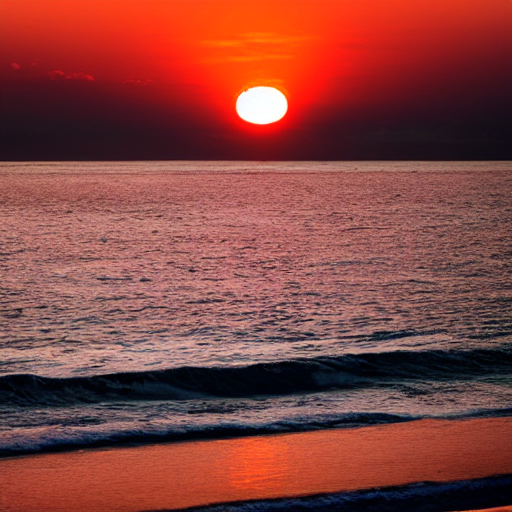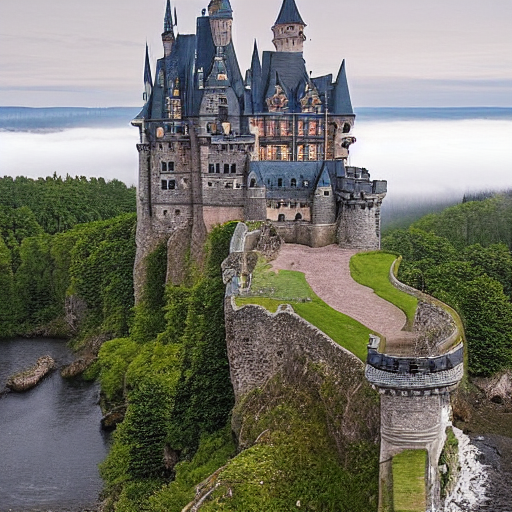AI Image Generator with Python & Django

AI Image Generator with Python & Django
Developing an AI image generator involves a mixture of backend and frontend programming and advanced AI models. Python is the foundation of this project, offering simplicity and flexibility. Django, a high-level Python web framework, offers rapid development and beautiful design.
Introduction to AI Image Generator
Artificial Intelligence (AI) transformed how we interact with technology, and we see one of its most intriguing uses in image-making as an art form. AI image generators can create breathtaking images from text, and they open up new avenues for art, design, and content creation. This article explores creating an AI image generator with Python, Django, and other robust tools, offering a step-by-step guide for developers and enthusiasts.
Project Requirements for an AI Image Generator
To start developing this project, the following toolset and framework is needed:
Programming Languages & Frameworks:
- Backend: Python 3.8+, Django.
- Frontend: HTML, CSS, JavaScript
AI Model Structures:
- PyTorch (for Stable Diffusion and deep learning models)
- TensorFlow (optional, subject to the model’s requirements)
GPU Acceleration:
- CUDA 11.7+ (for NVIDIA RTX 3090 optimization)
- cuDNN (for deep learning optimizations)
Image Processing & Utilities:
- OpenCV (for image processing and pre-processing)
- Pillow (a Python library for image processing)
- NumPy (for numerical computation)
Setting Up Your AI Image Generator Environment
Begin by installing Python 3.8+ and setting up a virtual environment. Install Django using pip:
bash
pip install django
Then, install the required libraries:
bash
pip install torch torchvision torchaudio
pip install opencv-python pillow numpy
Ensure that CUDA and cuDNN are properly installed in order to utilize GPU acceleration.
Backend Development with Django
Begin a new Django project:
bash
django-admin startproject ai_image_generator
Add a new application to the project
python manage.py startapp generator
bash
python manage.py startapp generator
Design models to process requests and responses for image generation. Design views to process the user input and generate the images according to the AI model. Design URLs to direct the requests accordingly.
Front-end Development
Utilize an easy-to-use interface using HTML, CSS, and JavaScript. Employ forms to get input from the user, e.g., text descriptions to create images. Employ dynamic features to enable user interaction and provide immediate feedback.
AI Image Generator with Stable Diffusion in PyTorch
Use the Stable Diffusion model in PyTorch to generate high-quality images from text prompts. Optionally use TensorFlow in anticipation of future model requirements. Make the models efficient but accurate.

Optimizing AI Image Generator with GPU Acceleration
Take advantage of the capabilities of NVIDIA RTX 3090 by installing CUDA 11.7+ and cuDNN. This type of installation optimizes the performance and speed of the AI model, allowing for faster image generation and processing.
Image Processing Techniques in AI Image Generator
OpenCV comes in handy for advanced image manipulation and pre-processing tasks, allowing you to fine-tune visual outputs efficiently. Pillow, a powerful image-handling library in Python, helps manage image formats and rendering smoothly. To handle mathematical computations, NumPy is utilized—ensuring fast and seamless integration with AI models during the generation process
Training Your AI Image Generator Model
Gather a large dataset of images and their text descriptions. Clean the data for quality and consistency. Train the AI model on PyTorch and fine-tune it to generate correct and high-quality images from user input.
Installing the Application
Select an appropriate hosting platform to host the application. Set up the server environment to host Django and the required libraries. Set up continuous integration and deployment pipelines to automatically manage updates and maintenance.
Enhancing AI Image Generator Performance
Add cache, image compression, and loading optimization to the app. Keep performance metrics under observation and optimize for user experience and app responsiveness.
Security Measures
Employ robust security measures to safeguard user information and application integrity. Take advantage of Django’s built-in security features, such as CSRF protection and input validation, to defend against common attacks.
User Interface Enhancements
Improve the user interface continually by integrating feedback and usability testing. Improve the visual aspects and simplify the complexity of navigation to ensure it is easy and interactive to use.
Testing and Debugging
Before launching, it’s crucial to conduct thorough testing to detect any bugs or performance issues. Django’s built-in testing framework simplifies automation and helps maintain application reliability. Additionally, routine debugging and codebase audits ensure the generator remains stable, efficient, and adaptable to future improvements.
Version Control using GitHub
Host the project codebase on GitHub. Document changes carefully and work well with other developers. Use branches and pull requests to make development processes effective.
Documentation and Tutorials
Create comprehensive documentation to assist users and developers in navigating and contributing to the project. Create tutorials and walkthroughs to assist them in learning and encourage community contribution.
Community Involvement
Create a community around the project by asking people to contribute, comment, and share news. Engage with users and developers to receive feedback and drive the project forward.
Future Enhancements
Reveal possible features and improvements like the inclusion of other AI models, language extensions, and increased image customization. Innovate fanatically to maintain.
Case Studies
Looking at real case studies brings the project to life and demonstrates its value in reality beyond theory. AI image generators have achieved mind-boggling uses in:
- Marketing & Advertising: Agencies leverage such tools to quickly design visual prototypes and creative assets directly for campaigns.
- Art and Design: AI-generated images are used as inspiration or as a backdrop for detailed paintings by digital artists.
- E-Commerce: Companies design product mockups or options for themselves to A/B test visual content.
- Gaming & Metaverse Building: AI assists in creating game assets, avatars, and even virtual worlds at scale.
- Education & Training: The AI software enables visual narrative in educational content, enhancing student engagement through images.
Each example embodies the flexibility, efficiency, and creativity such a generator can take advantage of when powered by a robust backend and deep learning design.
FAQs
What is the main AI model used in this AI image generator?
The underlying model is Stable Diffusion, as it is implemented using PyTorch. It offers robust image generation from text descriptions, optimized for coherence and creativity.
Is TensorFlow a replacement for PyTorch?
Yes, but you don’t have to. While PyTorch is the recommended choice for Stable Diffusion, TensorFlow may be required for other models or if you are more comfortable in that ecosystem.
How do I confirm GPU acceleration is on?
Check your environment has an NVIDIA GPU, and install CUDA 11.7+ and cuDNN. Check the environment with torch.cuda.is_available() == True.
What are the requirements to execute?
Minimum 16GB RAM, NVIDIA RTX GPU, Python 3.8+, and Windows or Linux OS. The GPU should have CUDA and cuDNN support.
Is the project scalable to production?
Yes! Owing to high scalability of Django, GPU support, and the modular AI structure, the generator can be utilized for production purposes.
Where is the source code stored?
You can find the source on GitHub (Put your link here). The repo includes setup instructions, dependencies, and example usage.
Conclusion
Building an AI Image Generator using Python, Django, and the latest deep learning libraries is not just a technology project—it is an innovation platform. By combining technologies like PyTorch, Stable Diffusion, OpenCV, and CUDA, you create a robust, multi-purpose tool that brings imagination to reality. Whether you are a developer, designer, researcher, or just an AI evangelist, this project opens your door to the image-creating future.
This guide walked through every crucial component, from setting up the backend with Django, integrating AI with PyTorch, optimizing GPU performance, handling frontend interactivity, and ultimately deploying a robust, scalable system.
Feel free to tinker with it, expand on it, test, and develop this project. Check out the GitHub repository for the full source code!
Discover more upcoming titles in our Tech Easy Hub.
Sample Output














1 thought on “AI Image Generator with Python & Django”